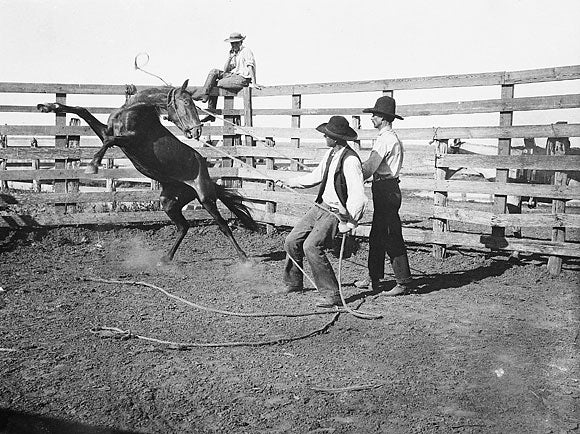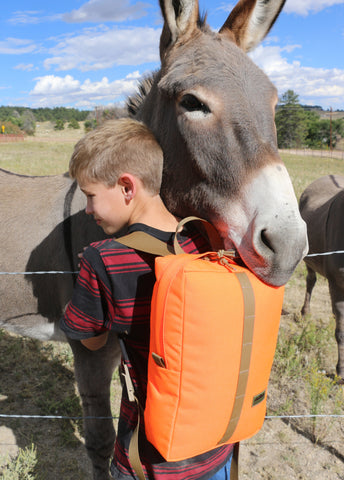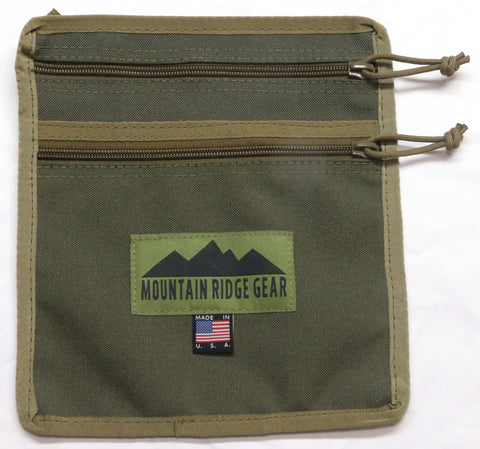It was the late 1930’s in Western Canada. There were untrained horses that needed to be transported by rail to the United States for agricultural use. The stockyard manager would pay $5.00 per animal if they could be halter trained. Halter trained meant the horse had to be led onto a boxcar.
A young teenage bronc buster named Nick West saw a way to make a little money. He was able to “halter train” around five horses per day. Twenty five dollars a day in the 1930’s was good money. He would rope the horses and a rodeo would ensue. Then, he would use a lariat to form a rope halter to bring the horses into submission so that they could be led. This was the quickest and easiest way to get them safely onto the waiting boxcar and get his payment.
The years and the cold Canadian winters took their toll. Nick would winter in Apache Junction, AZ. One winter in the early 1980's he had a bit of bad luck. He got into a vehicle accident and needed some body work done. So, he took his car to a local body shop. He noticed the body shop owner had pictures of equines on the walls of his shop. The body shop owner obviously had another passion; packing into the Grand Canyon. After the two men swapped a few stories the body shop owner invited Nick to his small ranch to show him some of the colts he was working on.
Nick and the body shop owner quickly became close friends. Nick taught him the art of braiding rawhide, but most importantly he saw a need to pass along a few tips he had learned all those years ago halter breaking wild horses in Canada. One of those tips was the special hitch he used to lead those wild broncs onto the boxcars. Nick called it a Come-a-long Hitch. The body shop owner was Steve Edwards. Since then Steve has shared this technique with thousands of people. Nick’s tool has become one of the most important training techniques that any wrangler could have.

I doubt Nick invented the come-a-long hitch. It’s been around as long as there’s been rope and horses. Thanks to Nick West and Steve Edwards equestrians all over the world have adopted a simple but effective tool for communicating with equines.




Darlene West
Thank you for the interesting read.
Nick West is my father in law. He was a very special man with wonderful work ethics and multi talented.
Nick was a very gentle soul and his love for horses and braiding won’t soon be forgotten.
I had the privilege of getting to know Steve and his wife first in Arizona and then when they made trips to Nick & Louises ranch at Sundre Alberta.
Thank you for the posting.
Kindest regards
Darlene West
Jd
This is a fun article! Nice to know where Steve got the idea from. Thanks for sharing.